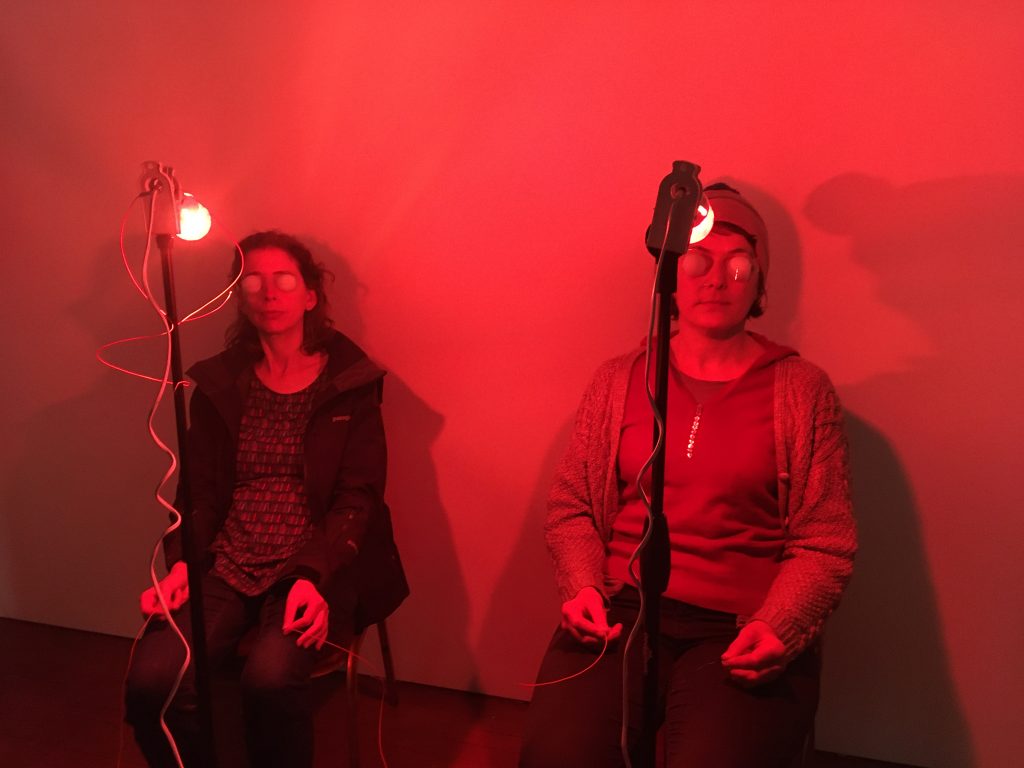
OWP / Sum Total of all the actions 2019 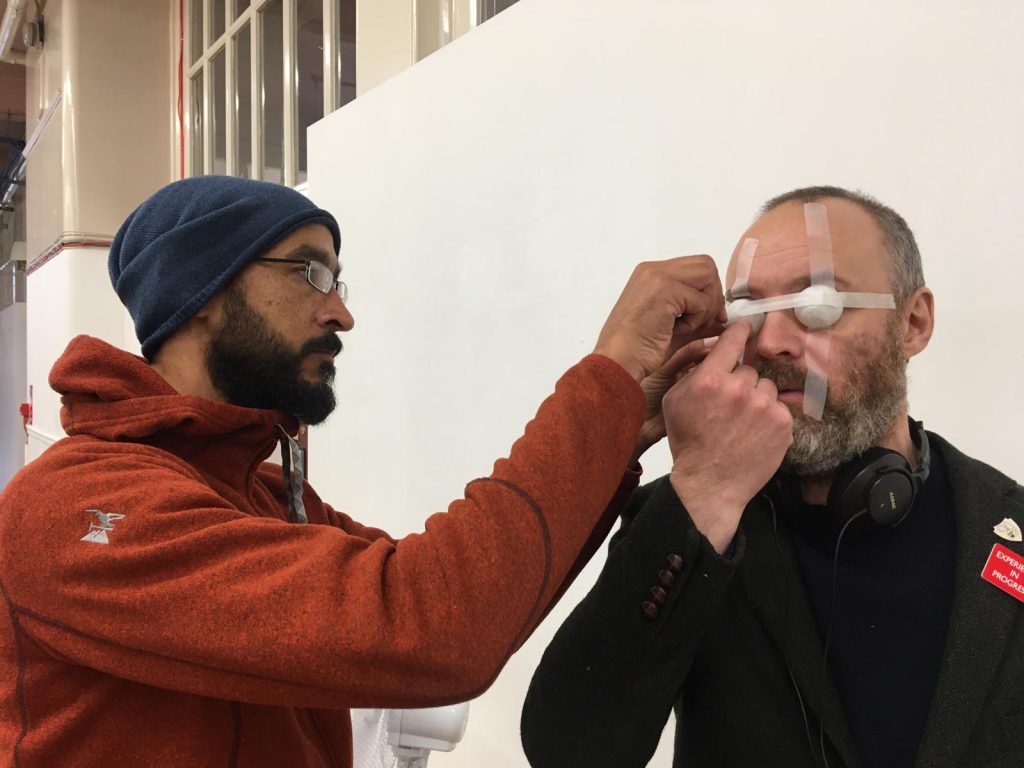
OWP / Sum Total of all the actions 2019 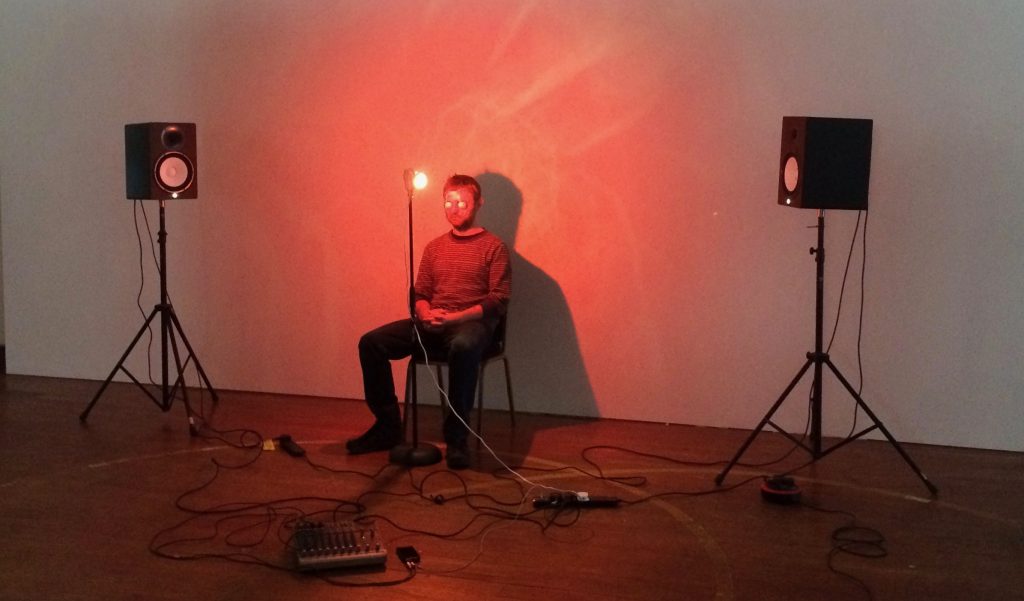
OWP / Sum Total of all the actions 2019 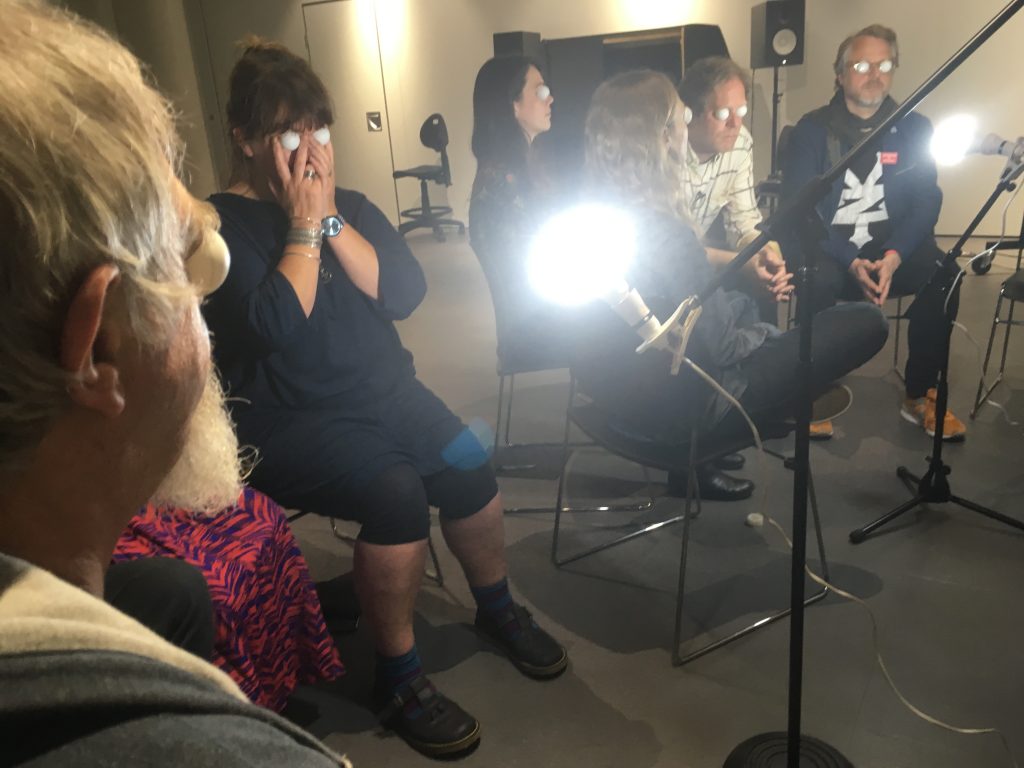
Re/Action Lab 2 – 2019 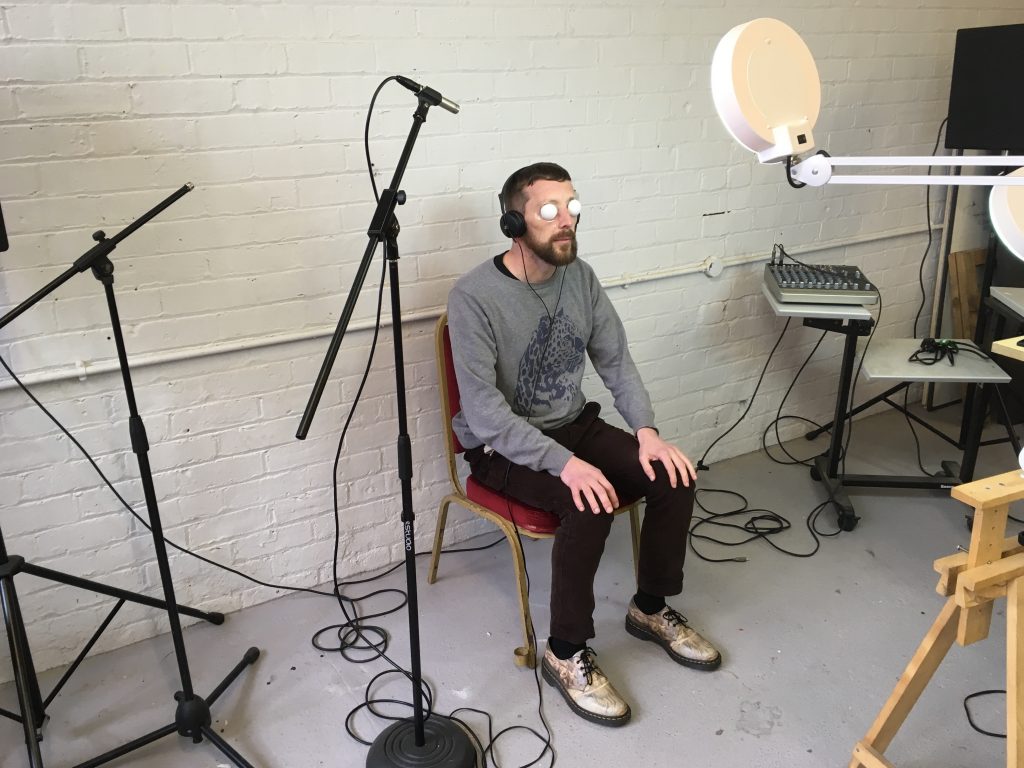
Ganzfeld / Rogue Artists Studios / 2019 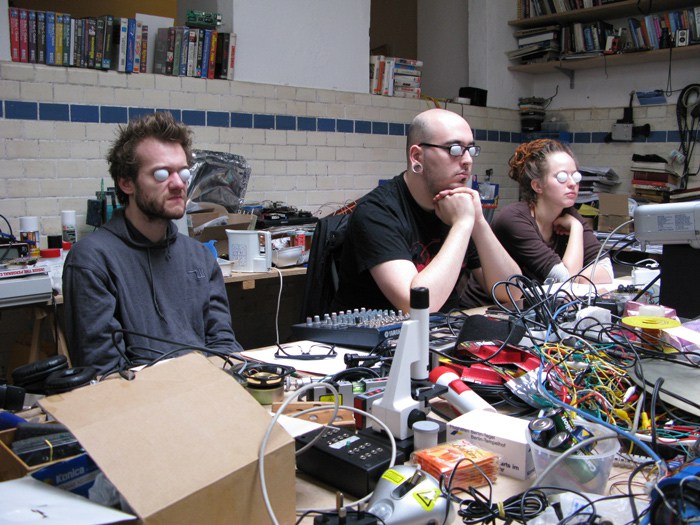
Early Ganzfeld workshop / Berlin 2009 
Re/Action Lab 2 – 2019
This workshop is based on the Ganzfeld experiment. Early explorations of subjective visual experience involved looking into nothingness, staring at the sky for prolonged periods, and prodding the eyeball (see also On the Inwardly Generated Image) they noted strange visual phenomena and ‘objects’ seemed to occur within the eye itself, and were ‘perceived’ without direct visual perception. Polar explorers have also reported hallucinations and altered mind states when travelling through featureless white landscapes. In the 1930s Gestalt psychologists spent extended periods of time staring at walls and created featureless filed of light and observed vivid hallucinations. They called this the ‘Ganzfeld’ [total or whole field] effect. The ganzfeld technique is now a widely used experimental model known to induce an altered state of consciousness similar to that of a hypnagogic, or dream-like state.
EQUIPMENT:
Bright light bulbs lamps [White/red] chairs / electronic device to work with sound such as laptop / ganzfeld hemispheres [or half ping pong balls] / sound system.
INSTRUCTION:
Participant/s:
1] Wear ganzfeld hemispheres over eyes.
2] Direct bright light towards face.
3] Sit in a comfortable chair / or lie down for 1 hour.
5] Focus and make a mental note of your experience as it unfolds.
Experimenter:
The experimenter is responsible for making final adjustments to the light bulbs and positioning. Before participating in the experiment alongside the other participants.
Natural sounds can also be used such as waterfalls, rain or machines such as fans or fan heaters. Another possibility is using biofeedback such as a galvanic skin response (GSR) sensor or heart rate, to make a reactive soundscape [see You Are The Object Of your Own Observation]
Post-experiment reflection:
After 30min – 1+ hour discuss colours, movements, sensations shapes emotions, key phrases of interest. Did you see any colours? Did you see any movement? What emotions did it provoke? What did you hear? What bodily sensations did you feel? Did you see recognisable forms, objects or people for example?
Audience
The audience should experience this workshop from a distance, separated by a barrier – or ideally through a window looking into the space.
DOCUMENTATION
Take a photograph of this experiment in progress/ stream live. Record sounds generated. Record the discussions / transcribe if desired. Photograph experiment. Notes should be taken. These materials and subsequent document inform any subsequent workshop
PhD Exhibition instructions: Roll over the gallery plan above and click on the links; this will take you through a series of pages that constitutes the online exhibition, each page contains this same gallery plan. If you get lost in the blog, you can return to the exhibition via the ‘PHD EXHIBITION’ link in the main menu at the top of the page. [ See the exhibition press release here >>>]